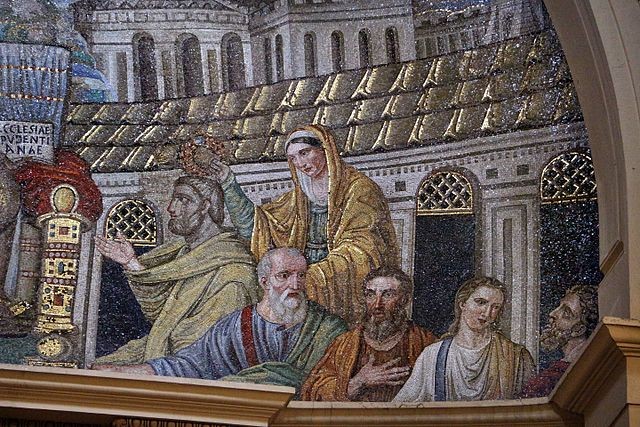The Laws of Mosaics
The Friday Reflection by James M. Kushiner
November 27th, 2020

M
an's appetite for historical memory is not merely an individual thing. We seek to add to our collective knowledge of the past by recovering what has been forgotten. Man is a determined archaeologist, digging for human artifacts, to study origins, to fill in the story of his past, and also to answer questions: What happened to these people? What did they know and believe? We seek such distant mirrors in the hope of enlarging history, mapping out the path from past to present, perhaps gaining insights into present predicaments.
In the entire cosmos, our collective human memory stands out as a repository of knowledge that contains vastly more than one human life can experience or one human mind can remember. The technological achievement of the internet offers individuals rapid access to a vast library of artifacts, knowledge, and historical memory.
The terrorist attacks of 9/11, which dominated our attention for so many days and weeks and months, are now part of the vast canvas of history. They are not likely to be forgotten or rendered into a mere footnote of academic interest any time soon. Yet someday, after the eyewitnesses, surviving victims, families of victims, and first responders perish from the earth, 9/11's part in the larger picture may quickly diminish with each passing generation.
It is theoretically possible to put all the pieces of history together so that history becomes a single but sprawling tale, the human story writ large. But history may also tell the smaller tales of individuals and a multitude of minor players—depending on how much personal detail we include. Like pixels in screen, brush strokes on a canvas, bits of colored glass in a mosaic, the fine details of history contribute to the larger picture, or a series of larger pictures.
Yet each human actor—including uncredited actors—unlike those smaller pixels, brush strokes, or bits of paint or glass, has his own story that participates in or reflects dynamic elements of grand history: vice, virtue, cruelty, compassion, vengeance, love, sin, redemption, shame and glory.
My father's experiences on the battlefield in World War II would add nothing crucial to the history of that global conflagration, but they were crucial to the young man bearing the image of God who faced the temptations, challenges, and traumas that haunt mankind.
What remains in the memory of any individual may linger for later generations because of personal love or because it provided an answer to perennial questions or gave meaning to life. Solzhenitsyn's small true-to-life fiction of a solitary prisoner in the vast Soviet gulag, One Day in the Life of Ivan Denisovitch, is a tale pregnant with universal meaning.
I've been working, in spare moments, on a memoir about the 12 days I was away from home across the ocean when 9/11 occurred. The book is the product of memory reflecting on a religious pilgrimage on Iona, and encounters with a ruined medieval nunnery, a restored medieval abbey, a volcanic island and Fingal's Cave, an Irish giant, the shock of 9/11, local tales of Viking terror, a Carmelite monastery, a weekend in my ancestral town, the destruction of an ancient Iron Age fortress, a World War II soldier killed in Normandy, a knife-wielding madman in a Glasgow art museum, and more.
These are mere personal pixels or small bits of glass, remembered experiences that formed into a mosaic that has captivated me for going on twenty years and that I desire to set down in writing.
Those memories have value primarily as they ultimately reflect light from the larger Story behind history, the Story of the Cross at Ground Zero, not the one in New York City, but Golgotha, the Ground Zero of history marking the end of the old Man, in anticipation of the New Man, the first-born of a new creation.
We do not see yet the full end, but the stories that endure all reflect what beckons on our horizon; they trace out the path we are invited to walk toward a brightly dawning homecoming, leaving far behind the long dark night of this world. The Morningstar rises, a mere pixel in the sky, but pregnant with heaven itself.
Yours for Christ, Creed & Culture,

James M. Kushiner
Executive Director, The Fellowship of St. James
—James M. Kushiner is Executive Editor of Touchstone: A Journal of Mere Christianity, and Executive Director of The Fellowship of St. James.







